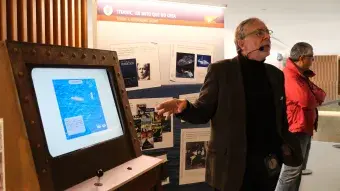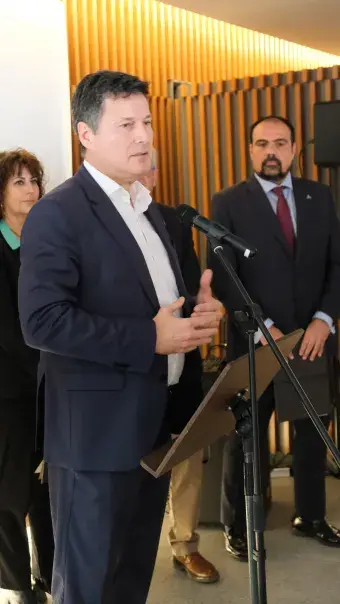![Banner-expo-titanic-Granada-science-park[17386]-](/sites/default/files/styles/style_1920x400/public/node/noticia/field_image_main/Banner-expo-titanic-Granada-parque-de-las-ciencias%5B17386%5D-.webp?itok=ksLw8MOb)
The Science Park explains in a new temporary exhibition why the Titanic sank
The prestigious Granada museum, together with the AXA Foundation and with the collaboration of The importance of prevention (1912 – 2025)', in which a tour of the various technical and human causes that occurred on the fateful night of the sinking of the Titanic is proposed.
The exhibition, which complements the permanent exhibition of the Titanic Pavilion, called 'Titanic. Lessons from the Great Tragedy' and which houses the largest model built of this ship in the world, reviews the technical and human circumstances that caused the sinking and brings them closer to the visitor through information accessible through QR codes. It also does so by relating the causes of the accident to the thirtieth anniversary of the enactment of Law 31/1995 on the Prevention of Occupational Risks.
Luis Alcala, director of the Science Park, opened the event by highlighting the important work of the Prevention Culture Pavilion in promoting prevention in order to avoid catastrophes of such magnitude. He has also been proud that the Science Park acts in this important social work.
Natalia Fdez. Laviada, Deputy General Director of Prevention, Quality and Communication of Fraternidad-Muprespa, has stressed that her entity's commitment to the Science Park and the AXA Foundation remains intact. "The Titanic tragedy combines history and reflection and invites us to look to the past to extract valuable lessons for our present and future, especially in the field of Occupational Risk Prevention." He concluded by accompanying his words with the shocking figure of 18,033 people who died from external causes (accident and unnatural death) in 2023, the second highest figure in the last 30 years.
Josep Alfonso, general director of the AXA Foundation, has highlighted the work of many people for whom tragedies like this are a lesson, given that "they analyze and study them to prevent them from happening again. They inspect and review endlessly all the circumstances that occurred before the disaster. And their conclusions are decisive because they stimulate research into new materials, modify action protocols, ways of making or construction, productive and even legislative processes." “It is important,” he summarized, “that society knows that disasters like that of the Titanic also serve to save lives.”
Luis Roda, general director of Labour, Safety and Occupational Health of the Junta de Andalucía, highlighted in his speech the great step that the creation of a framework regulation on occupational health and safety entailed, 30 years ago, and urged a review to update it in accordance with current reality. He also made those present participate in the 'It could have been avoided...' program, integrated into the 'Dangerous Work Situations' project of the National Institute of Safety and Hygiene at Work, which analyzes accidents that have occurred in Andalusia with the aim of showing the foreseeable causes and the preventive measures that could have prevented them.
Antonio José Millán, curator of the exhibition and director of the AXA Prevention Classroom, has guided the attendees through the exhibition in an attractive and informative visit where he has explained the issues that were fundamental in triggering the tragedy of the sinking of the ship, just as he did in space Fratertalk by Fraternidad-Muprespa.
The importance of prevention
The exhibition collects in various panels and display cases relevant pieces while covering the events that occurred that fateful night in April 1912, accompanied by observation from the point of view of prevention, with references to articles of Law 31/1995 on the Prevention of Occupational Risks, providing the keys to the analysis of the events that occurred in a context where not only technical causes but also individual and collective decisions and actions converged.
A similar display could previously be seen at the Regional Institute of Safety and Health at Work of the Community of Madrid, the Asturian Institute for Occupational Risk Prevention, at the Red Cross headquarters in Malaga and at the Provincial address of Fraternidad-Muprespa in A Coruña.
In addition, the Mutua has also collaborated in another exhibition that can be visited in the Science Park, “I+P innovating in prevention” which reviews some of the main technical advances that have emerged in recent decades thanks to which accidents have been avoided and increased safety in the work environment and in people's daily lives.







